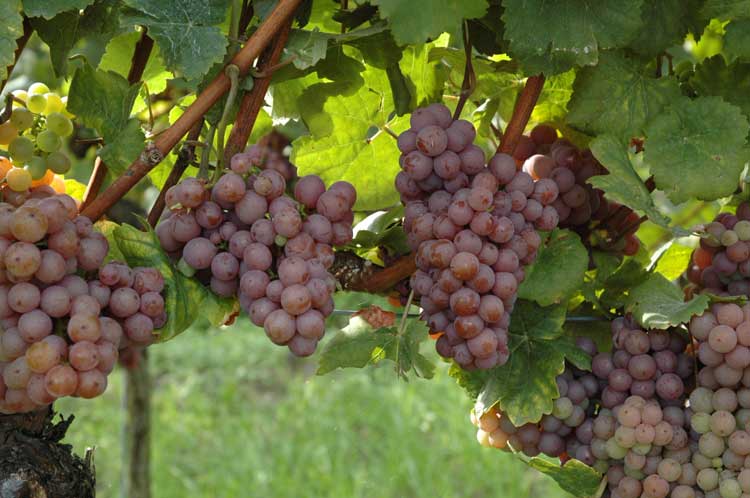Gewurztraminer from german Gewürztraminer “Spicy” or “fragrant” Traminer – one of the most piquant wine grapes is raw material for Gewurztraminer white wine
The history of Gewürztraminer as Traminer began in Italy’s Tyrollean Alps, near the village of Termeno (Tramin) in Alto Adige. In 1870, King Charles Frederick had introduced vines from Italy to Alsace where this grape called Gewürztraminer, for outstanding aromatic properties. Alsace has achieved the most success growing Gewürztraminer grape and as a result, in production of Gewurztraminer white wine. Although it makes up 20% of the vines there, second only to Riesling at 23%, some producers give Gewürztraminer less priority than other varieties and make accordingly dull wines.
While the gewürztraminer vine is prized for its wine, it can be despised for its viticultural difficulty. It buds early in the Spring, so it is particularly susceptible to damage from frost; even without this threat, it is prone to poor fruit set. Gewürztraminer also has weak defenses against viral vine infections.
The grapes need to be harvested at perfect ripeness to avoid bitterness, high alcohol and/or overt sweetness – especially when botrytis increases the sugar level. The variety does not have as much acidity as Riesling, but neither does Chardonnay.
While Gewürztraminer wine has many similarities to Moscato it also has higher alcohol, more striking aromatics and lower acidity.
Wine is very pungent and quite full-bodied, – to a greater extent than other white wine varieties (except maybe Viognier). In fact, the combination of powerful, perfumed flavor, exotic taste with notes of walnut and lychee with a heavy oily structure make this wine excessive and difficult to grasp by many inexperienced amateurs. Here you can add sometimes existing inherent bitterness increasing with maturation.
Food pairing
Gewurztraminer white wine goes well with fresh fruit and cheese (especially Alsatian Munster) and perfectly complements the simple dishes of fish and chicken!
